Related Research Articles

The University of California, San Diego is a public land-grant research university in San Diego, California. Established in 1960 near the pre-existing Scripps Institution of Oceanography, UC San Diego is the southernmost of the ten campuses of the University of California, and offers over 200 undergraduate and graduate degree programs, enrolling 33,343 undergraduate and 9,533 graduate students. The university occupies 2,178 acres (881 ha) near the coast of the Pacific Ocean, with the main campus resting on approximately 1,152 acres (466 ha). UC San Diego is ranked among the best universities in the world by major college and university rankings.

The Scripps Institution of Oceanography in San Diego, California, US founded in 1903, is one of the oldest and largest centers for ocean and Earth science research, public service, undergraduate and graduate training in the world. Hundreds of ocean and Earth scientists conduct research with the aid of oceanographic research vessels and shorebased laboratories. Its Old Scripps Building is a U.S. National Historic Landmark. SIO is a division of the University of California San Diego (UCSD). The public explorations center of the institution is the Birch Aquarium at Scripps. Since becoming part of the University of California in 1912, the institution has expanded its scope to include studies of the physics, chemistry, geology, biology, and climate of Earth.
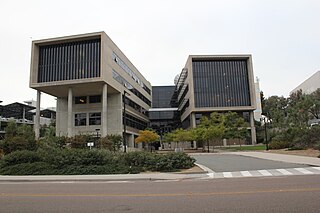
The San Diego Supercomputer Center (SDSC) is an organized research unit of the University of California, San Diego (UCSD). SDSC is located at the UCSD campus' Eleanor Roosevelt College east end, immediately north the Hopkins Parking Structure.
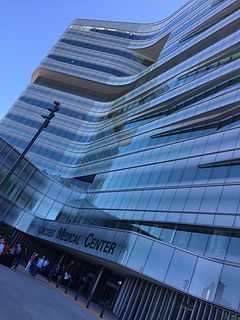
UC San Diego Health is the academic health system of the University of California, San Diego in San Diego, California. It is the only academic health system serving San Diego and has one of only two adult Level I trauma centers in the region. In operation since 1966, it comprises UC San Diego Medical Center in Hillcrest as well as Jacobs Medical Center, Moores Cancer Center, Shiley Eye Institute, Sulpizio Cardiovascular Center, and Koman Family Outpatient Pavilion, all located in La Jolla. It also includes several outpatient sites located throughout San Diego County. The health system works closely with the university's School of Medicine and Skaggs School of Pharmacy to provide training to medical and pharmacy students and advanced clinical care to patients.

The University of California San Diego School of Medicine is the graduate medical school of the University of California, San Diego. It was the third medical school in the University of California system, after those established at UCSF and UCLA, and is the only medical school in the San Diego metropolitan area. It is closely affiliated with the medical centers that are part of UC San Diego Health.
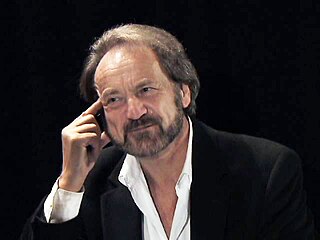
Roger Bingham is a science educator, author and television host based in La Jolla, California. He is co-founder and director of the Science Network (TSN), a virtual forum dedicated to science and its impact on society. Bingham is also the creator of the Beyond Belief conferences.
Henrik Iskov Christensen is a Danish roboticist and Professor of Computer Science at Dept. of Computer Science and Engineering, at the UC San Diego Jacobs School of Engineering. He is also the Director of the Contextual Robotics Institute at UC San Diego.

The California Institute for Telecommunications and Information Technology (Calit2, previously Cal(IT)2), also referred to as the Qualcomm Institute (QI) at its San Diego branch, is a $400 million academic research institution jointly run by the University of California San Diego (UCSD) and the University of California, Irvine (UCI); in January 2022, plans were announced to add University of California, Riverside to the consortium. Calit2 was established in 2000 as one of the four UC Gray Davis Institutes for Science and Innovation. As a multidisciplinary research institution, it is conducting research discovering new ways in which emerging technologies can improve the state's economy and citizens' quality of life. Keeping in mind its goal of addressing large-scale societal issues, Calit2 extends beyond education and research by also focusing on the development and deployment of prototype infrastructure for testing new solutions in real world environments. Calit2 also provides an academic research environment in which students can work alongside industry professionals to take part in conducting research and prototyping and testing new technologies.
The UC San Diego Tritons are the athletic teams that represent the University of California, San Diego. UC San Diego has 23 varsity sports teams and offers student participation in a wide range of sports. As of July 1, 2020, all UC San Diego teams participate at the NCAA Division I (DI) level in the Big West Conference. During their time in NCAA Division II and the California Collegiate Athletic Association starting in the 2000–01 season, UCSD placed in the top 5 in the Division II NACDA Directors' Cup standings nine times, including three 2nd-place finishes. NCSA Athletic Recruiting ranked the Tritons as the nation's top Division II program for eight consecutive years.
The Irwin and Joan Jacobs School of Engineering is an undergraduate and graduate-level engineering school offering BS, BA, MEng, MS, MAS and PhD degrees at the University of California, San Diego in San Diego, California. The Jacobs School of Engineering is the youngest engineering school of the nation's top ten, the largest by enrollment in the University of California system, as well as the largest engineering school on the West Coast and the ninth-largest in the country. More than thirty faculty have been named members of the National Academies. The current dean of the Jacobs School of Engineering is Albert P. Pisano. The Jacobs School of Engineering sends a monthly news email which anyone can subscribe to.
Igor Grant is an American psychiatrist. He is Distinguished Professor in the Department of Psychiatry in the School of Medicine at the University of California, San Diego. He is Director of the HIV Neurobehavioral Research Program (HNRP) and the Center for Medicinal Cannabis Research (CMCR). Grant is the founding Editor of the Journal of the International Neuropsychological Society and founding co-editor of the journal AIDS and Behavior. His work focuses on effects of HIV and drug use, particularly alcohol, medical marijuana, and methamphetamine.
David G. Victor is a professor of innovation and public policy at the School of Global Policy and Strategy at UC San Diego where he holds the Center for Global Transformation Endowed Chair in Innovation and Public Policy. Victor is currently the co-director of the campus-wide Deep Decarbonization Initiative. D2I is a collaboration of faculty from across the UC San Diego campus who work at the intersection of science, technology and policy. The initiative was founded as a joint partnership between UC San Diego’s Jacobs School of Engineering and School of Global Policy and Strategy. At UC San Diego, Victor was previously the co-founder of the Laboratory on International Law and Regulation(ILAR)
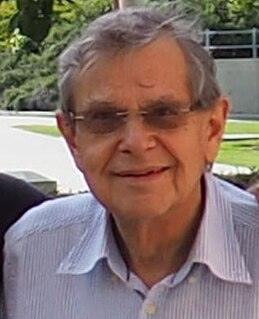
Forman Arthur Williams is an American academic in the field of combustion and aerospace engineering who is Emeritus Professor of Mechanical and Aerospace Engineering at the University of California San Diego.
Farhat N. Beg from the University of California, San Diego, was awarded the status of Fellow in the American Physical Society, after he was nominated by his Division of Plasma Physics in 2009, for contributions to the understanding of physics of short pulse high intensity laser matter interactions and pulsed power driven dense Z-pinches. His empirical scaling of hot electron temperature versus laser intensity has contributed significantly to the understanding of relativistic electron generation and transport in matter. He was the recipient of the Department of Energy Early Career Award in 2005 as well as the IEEE Early Achievement Award in 2008. He also has been a fellow of the IEEE since 2011. He currently is the director of the Center for Energy Research at UCSD with a focus on Inertial Confinement Fusion.'
Stanford Solomon Penner also known as Sol Penner, was a German-American scientist and engineer, a major figure in combustion physics, especially in rocket engines, and a founder of the Engineering program at University of California, San Diego. He obtained his PhD in 1946 from the University of Wisconsin–Madison under Farrington Daniels and Theodore von Kármán.
Cheryl Ann Marie Anderson is an American epidemiologist. Anderson is a professor at and founding Dean of the University of California San Diego Herbert Wertheim School of Public Health and Human Longevity Science. Anderson's research focus is on nutrition and chronic disease prevention in under-served human populations.

Ying Shirley Meng is a materials scientist and professor at the Pritzker School of Molecular Engineering at the University of Chicago and chief scientist at Argonne National Laboratory. Meng is the author and co-author of more than 200 peer-reviewed journal articles, two book chapter and six patents. She serves on the executive committee for battery division at the Electrochemical Society and she is the Editor-in-Chief for MRS Energy & Sustainability.

Olivia Graeve is a mechanical and aerospace engineer and Professor at University of California San Diego. She is also the Director of the CaliBaja Center for Resilient Materials and Systems at UC San Diego — a binational research institute on both sides of the California-Mexico border.
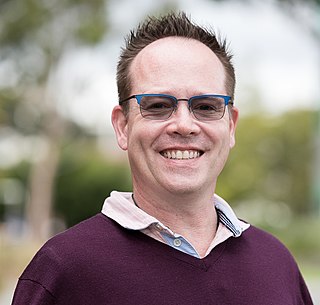
David "Davey" M. Smith, is an American translational research virologist, Chief of the Division of Infectious Diseases and Global Public Health at the University of California San Diego, Co-Director of the San Diego Center for AIDS Research, and Vice Chair of Research in the Department of Medicine at UC San Diego. His research interests include transmission, prevention, and treatment of both HIV and SARS-CoV2 (COVID-19). Since joining the UC San Diego faculty in 2003, Smith has been awarded more than $37 million in federal funding as a Principal Investigator. His research interests include transmission, prevention, and treatment of both HIV and COVID-19.
Patrick Henry Diamond is an American theoretical plasma physicist. He is currently a professor at the University of California, San Diego, and a director of the Fusion Theory Institute at the National Fusion Research Institute in Daejeon, South Korea, where the KSTAR Tokamak is operated.
References
- ↑ "CER". cer.ucsd.edu.
- ↑ "History". cer.ucsd.edu.
- ↑ "UC San Diego Center for Energy Research, LPPFusion to Collaborate on Fusion Energy Research". 11 October 2017.
- ↑ "UC San Diego's Center for Energy Research Shares $13.5M Grant for Campus-National Lab Collaborations".
- ↑ "Collaborations". cer.ucsd.edu.